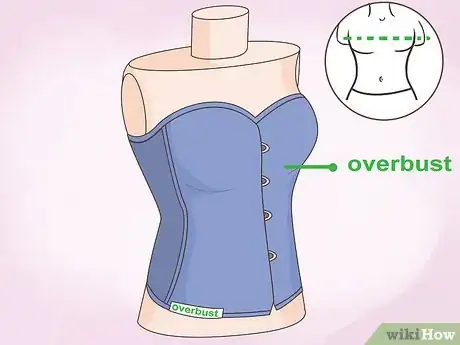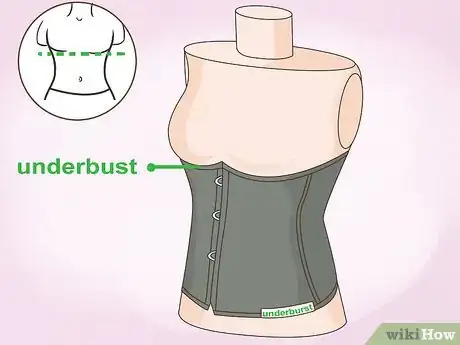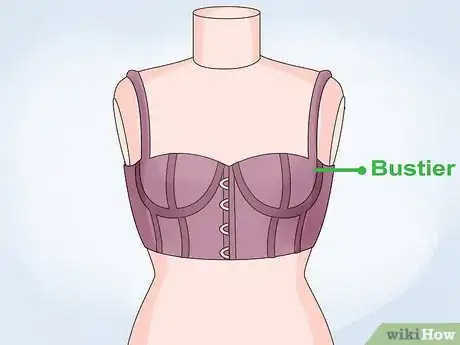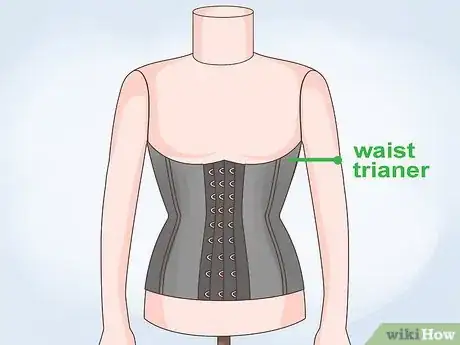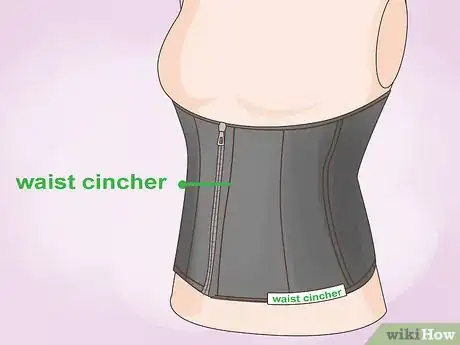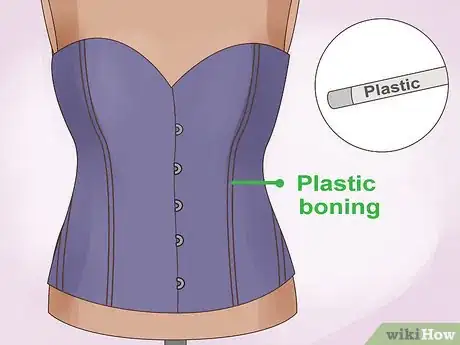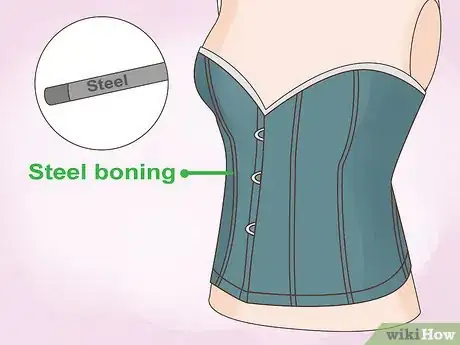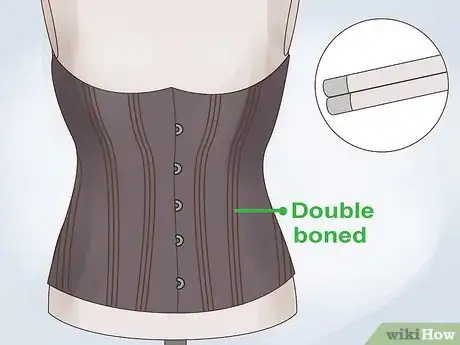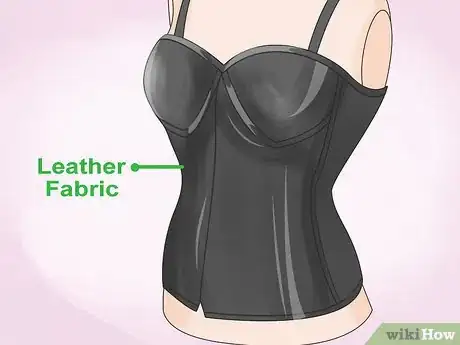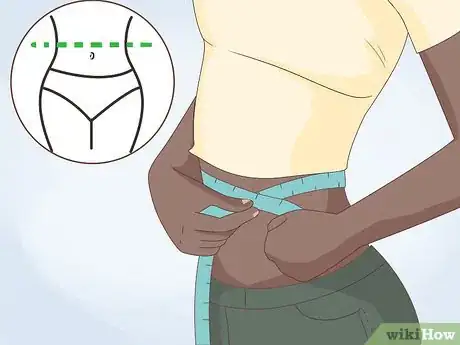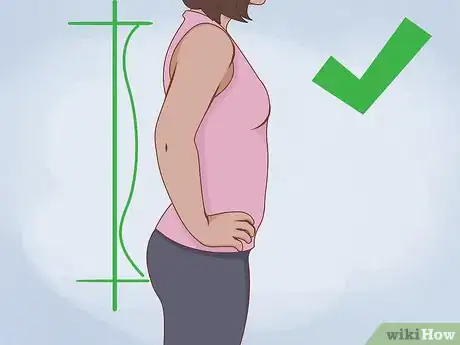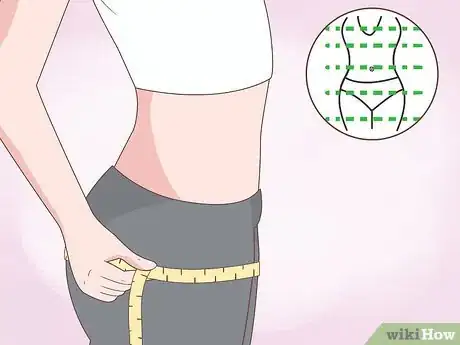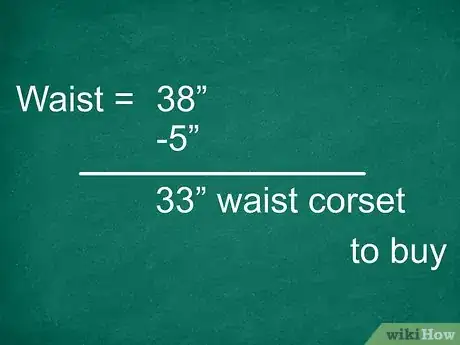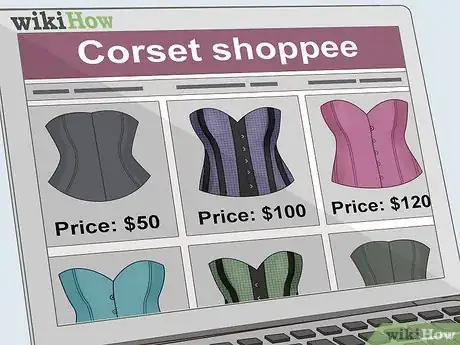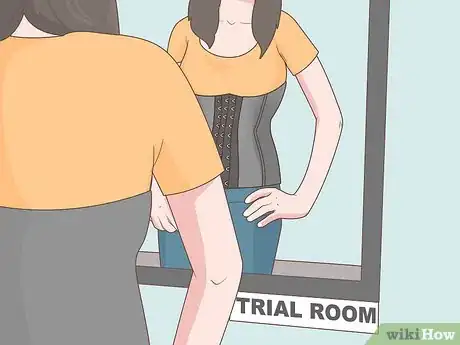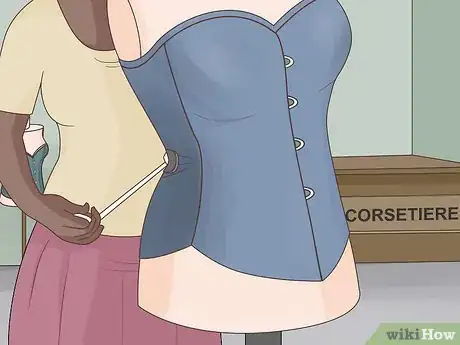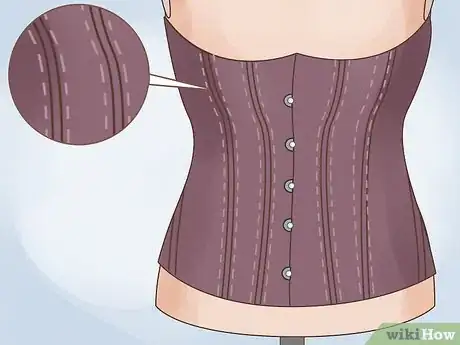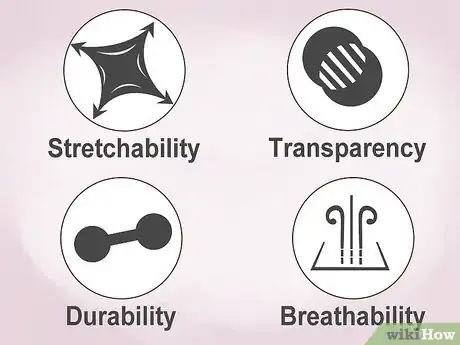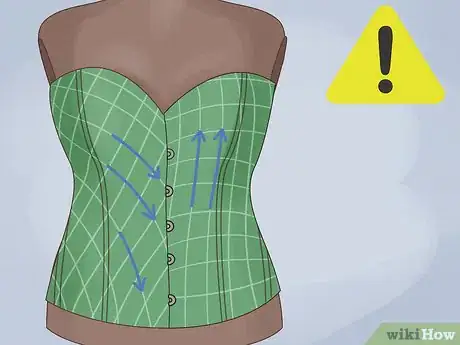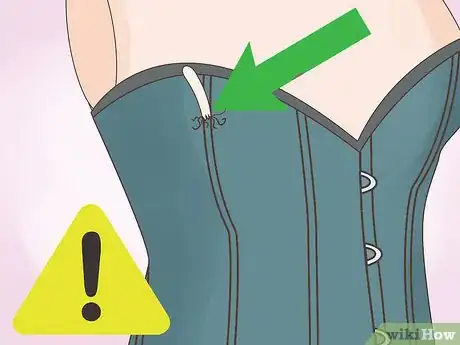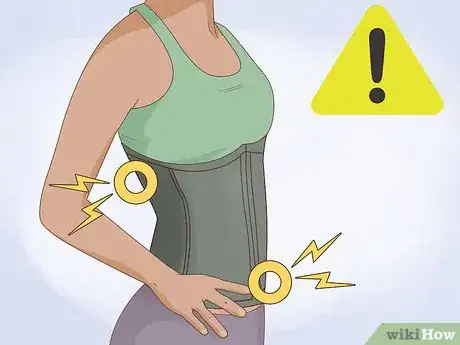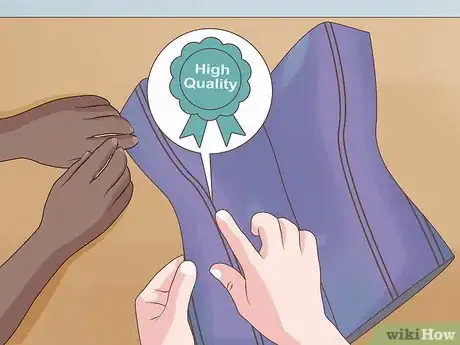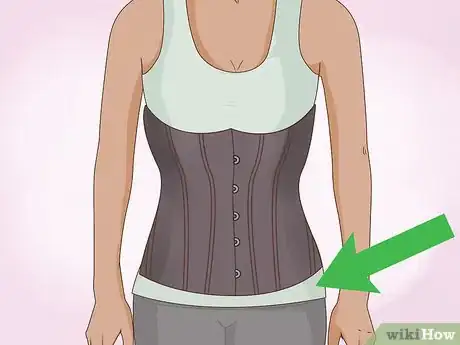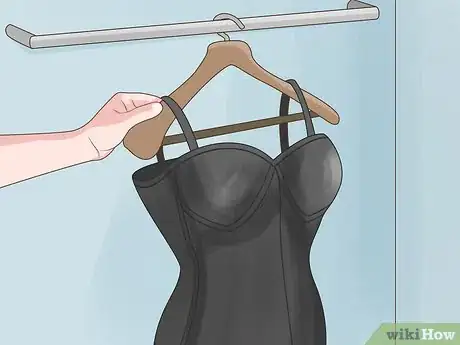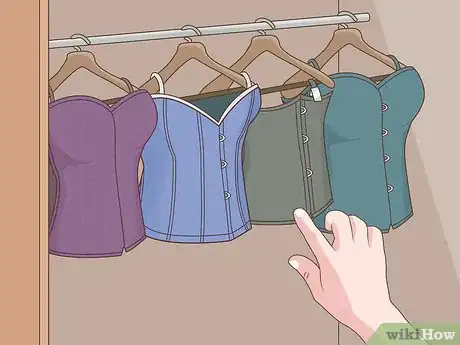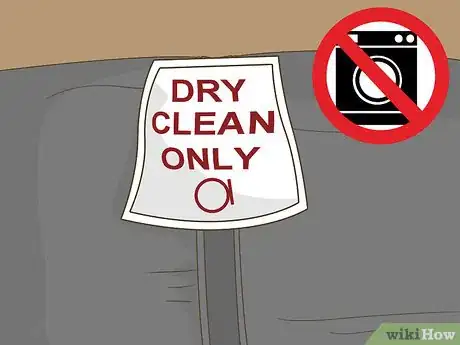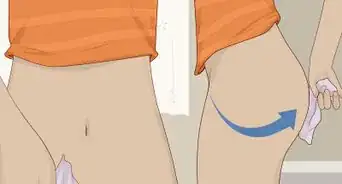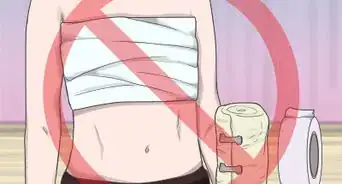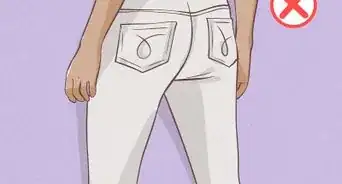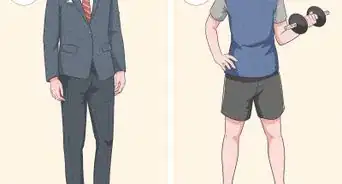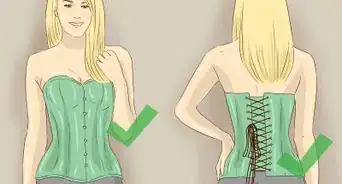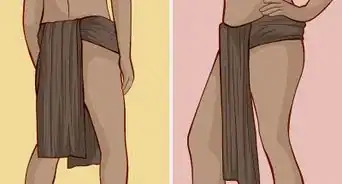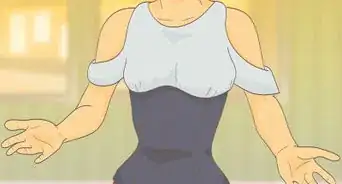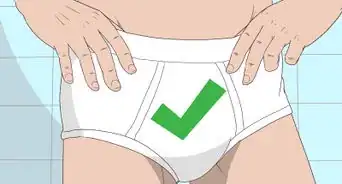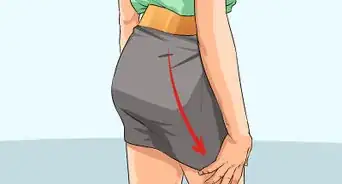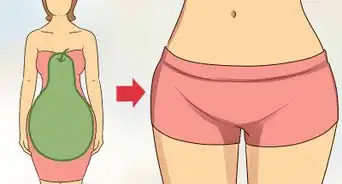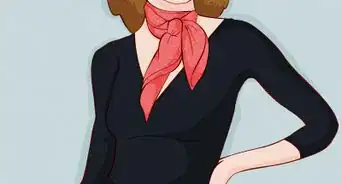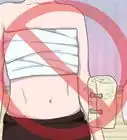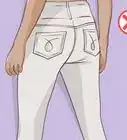This article was co-authored by Erin Micklow. Erin Micklow is an independent wardrobe stylist and image consultant based in Los Angeles, California. She has worked in the acting, beauty, and style industries for over 10 years. She has worked for clients such as Hot Topic, Steady Clothing, and Unique Vintage, and her work has been featured in The Hollywood Reporter, Variety, and Millionaire Matchmaker.
There are 9 references cited in this article, which can be found at the bottom of the page.
This article has been viewed 308,974 times.
There are many different varieties of corsets. Some are worn as fashion accessories, some as garments on their own, and others are worn for the lovely hourglass figure they help create. However, purchasing the right corset comes down to knowing what you are looking for personally. Once you know how to purchase one with confidence, you'll be laced up in no time.
Steps
Choosing a Type of Corset
-
1Choose an overbust style for more coverage. Overbust styles cover from the top of the breasts to just above the hips or to the lap and can have straps or be strapless. They are popular in costumes, lingerie, or as a fashion statement. Select this style if you want a corset that covers more skin, or can be worn on its own.
-
2Opt for an underbust for a more subtle look. Underbusts generally start just under the bust line and go down to the hips or lap. Underbusts are easy options because they only require waist measurements. They are useful as waist cinchers under clothes, or can even be worn on the outside of clothes for a unique look. [1]Advertisement
-
3Wear a bustier for a casual option. Bustiers are similar to corsets, but are simpler and generally much more affordable. They offer similar looks, but will not have true boning, or no boning at all. They are great as lingerie or for a fun costume, but do not offer as much structure or shape as a true corset will.Expert AnswerQ
When asked, "How can you style a bustier for everyday wear?"
Erin Micklow is an independent wardrobe stylist and image consultant based in Los Angeles, California. She has worked in the acting, beauty, and style industries for over 10 years. She has worked for clients such as Hot Topic, Steady Clothing, and Unique Vintage, and her work has been featured in The Hollywood Reporter, Variety, and Millionaire Matchmaker.Professional Stylist
 EXPERT ADVICEAnswer from Erin Micklow:
EXPERT ADVICEAnswer from Erin Micklow:Erin Micklow, professional stylist and designer, responded: "You can pair a bustier with more conservative pieces like slacks and a blazer for a sophisticated, yet chic look! Add a pair of sexy stilettos or platform heels to finish off the look."
-
4Try a waist trainer for more a more permanent effect. Waist trainers are a more advanced type of corset that can alter the physical arrangement of a body to reduce inches from the waist. This type of training must be done over extended periods of time and requires a sturdy, well-fitted, high quality corset.
- Waist-training comes with certain risks, and should only be attempted after careful research and by someone with some corset experience. [2]
-
5Select a waist cincher or body shaper as a more comfortable option. Waist cinchers are generally latex or some other elastic material used to squeeze in the waist and flatten or smooth the shape of the body. While these are sometimes mistakenly referred to as waist trainers, a more appropriate title might be “waist tamer” as they do not offer significant long-lasting effects, yet are easy to wear and fit into.
Selecting Materials
-
1Pick plastic boning for casual wear. Plastic boning is inexpensive, comes in many styles, and is easy to wear. This type of boning is ideal for costumes that will not receive extended wear, lingerie, or as a fun addition to a wardrobe. However, plastic boning is not ideal for extended wear or waist training.
-
2Select steel boning for more support. Steel boning can be more comfortable and is good for extended wear, yet will generally be more expensive than plastic boning. Steel boning comes in two forms:
- Flat steel boning offers a smooth and, as the name implies, flat look. It will typically offer less curve but may create a more angular structure.
- Spiral steel boning creates a more flexible curve since it can bend in more directions. This is good for a very cinched in waist and soft curves overall.
- A hybrid is often used to create a look that is firm in some places and flexible in others. Many corsets will have flat steel boning near the closures, but flexible steel boning along the sides.
-
3Use a double-boned for additional structure and support. Double-boned corsets are usually the best option for waist training as they have twice as many bones for support and last much longer. [3]
Selecting a Fabric
-
1Select satin or brocade for a luxurious look and feel. Satin (or satin polyester) produces a very shiny corset and is especially common for corsets sold as lingerie or in costumes. The delicate embroidery of brocade makes it look expensive and fashionable. It is a great choice for a beautiful and unique corset that looks intricate without the need for additional embellishments.
-
2Wear lace or mesh for a bit of fun. A full lace or mesh corset might not last long on its own, but can be very pretty and flattering. The fact that mesh or lace corsets are generally made with only a single layer makes them more practical in warm weather. Both materials also work well layered on top of other fabrics, or as embellishments for extra fun.
-
3Lace up in latex or leather for a dramatic look. Latex and leather corsets are a popular option because they are sturdy, elastic, and easy to clean. Pick these options for a bold, sexy look. Keep in mind that these materials are not breathable so they may cause sweating or irritation if worn for extended periods or in hot weather.[4]
Measuring for Size
-
1Measure your waist. Use fabric measuring tape to measure around your waist where it is most narrow and make note of the measurement in inches.
- Use a string if you don't have measuring tape. A string can work in a pinch if you don't have a fabric measuring tape. Simply place the string around your waist and mark where the ends come together. Then you can measure the string against a flat ruler or yardstick. This trick can be used for other measurements as well.
-
2Relax when measuring. Be sure that you are standing with good posture, and relaxing your stomach when measuring. The best measurements should reflect your waist when relaxed. The tape should also be relaxed yet taut.
-
3Take additional measurements if needed. Some corsets require more measurements. You can easily find these by following the same steps around different body parts. There are several other common measurements:
- The fullest part of your bust may be needed for overbust styles or bustiers.
- Measuring the underbust might help create the perfect fit for a custom style.
- The top of your hip bones could be useful for a mid-length corset.
- A full hip measurement might be necessary for a longer style. [5]
-
4Subtract 4”-5” from your waist measurement. The general rule of thumb when selecting corsets online or in stores is to subtract 4 to 5 inches (10.2 to 12.7 cm) from your relaxed waist measurement. For your bust or hips, you may not need to take in more than an inch or two. http://www.thelingerieaddict.com/2015/05/how-to-shop-for-a-waist-training-corset.html
-
5Select the closest corset size. Most corset sizing comes as even numbered inch measurements. After you subtract from your initial waist measurement, select the size that comes closest.
- Most real corsets will not come in small, medium, or large. However, some bustiers or ready-to-wear options may use these size options. Follow sizing charts online, or try a few options on in the fitting room if shopping in-store.
Making the Purchase
-
1Consider buying online for a convenient option. Purchasing online can be discreet and simple. There are endless options for styles and looks online. Try to find reviews for any websites, and consider return or exchange policies before finalizing a purchase. [6]
-
2Buy a ready-to-wear corset for an easy purchase. Purchasing a corset in-store is a great option because it allows you the opportunity to try before you buy. This can help you find the perfect size, and the most flattering style for your body before you ever spend a dime. [7]
-
3Visit a corsetière for a deluxe corset. Ordering a custom corset from someone who specializes in their creation can be an exciting experience that offers the best quality corset. This is a good option for a very specific look as they are able to customize nearly every aspect of the corset to your specifications. Professional measuring and tailoring can provide the perfect fit. However, this quality will generally be more of an investment because it is costlier and more time-consuming. [8]
-
4Check the quality of the seams. A good corset will have smooth seams and no extra threads hanging loose. Also, the stitching should be consistent, and there should be no rippling or ridges in the fabric when the corset is worn.
-
5Select high quality materials. Any corset you want to last for many uses should have multiple layers of fabric. Also examine the quality of material. Most quality corsets will use all-natural fabrics for the inner-layer and high-quality materials for the outside fashion fabric. Consider characteristics like transparency, stretch, breathability, durability, and look.
-
6Avoid mismatched patterns. A good indicator of quality is whether or not the pattern in the fabric matches at the front seams. Attention to detail is important and this is one simple step that low-quality corset manufacturers might skip.
-
7Check for damage. Any damage or mistakes should be noted immediately and is unacceptable. Take pictures of any damage or mistakes to facilitate a return to an online seller.
-
8Prioritize comfort. When you are wearing your corset it should be comfortable. If it causes any pain or significant discomfort it can be a sign that it is poor quality or ill-fitting.
-
9Demand quality in custom corsets. Let your corsetière know if you are not happy with any aspect of the look or quality of your corset. It is not uncommon to have to have two or three fittings before getting the corset perfect. Do not be afraid to voice your opinions and let your corsetière know if you want any changes made. [9]
Extending the Life of the Corset
-
1Wear a layer between your skin and the corset. This can help protect the integrity of the materials, and makes cleaning them a less frequent necessity.
-
2Air out corsets after they are worn. Corsets should be hung loosely in a closet or over the back of a chair after they are worn to let them air out.
-
3Alternate between corsets. Wearing one corset every day can place a lot of stress on it leading to faster deterioration of materials or even damage to the boning. Try to alternate between at least two corsets to avoid putting too much stress on a single one.
-
4Dry-clean your corset. Corsets should never be machine washed. To extend their life they should only ever be spot-cleaned or dry-cleaned. [10]
Community Q&A
-
QuestionWhat size corset should I buy if I have a size 30 waist?
 Community AnswerFirst, make sure you measure about an inch above your belly button and subtract 2 inches. If you are new to wearing a corset, subtract 4 inches, and if you want the shape and don't care about the comfort, you can subtract 6 inches.
Community AnswerFirst, make sure you measure about an inch above your belly button and subtract 2 inches. If you are new to wearing a corset, subtract 4 inches, and if you want the shape and don't care about the comfort, you can subtract 6 inches. -
QuestionI want to reduce my 32 inch waist size to 28 inches, but enlarged my hips. What size should I buy?
 TheCuriousRavenCommunity AnswerA 28" corset with big hip spring is what you need. Your underbust and hip measurement are also vital to know in choosing the right corset. Either order a custom made corset, or buy off the rack - looking for curvy brands with bigger hip spring (hip to waist ratio).
TheCuriousRavenCommunity AnswerA 28" corset with big hip spring is what you need. Your underbust and hip measurement are also vital to know in choosing the right corset. Either order a custom made corset, or buy off the rack - looking for curvy brands with bigger hip spring (hip to waist ratio). -
QuestionCan I wear a corset with rods in the back?
 Community AnswerYes, you can. These are called back lacing bones. All authentic corsets have back lacing bones, these are great for back support and lacing.
Community AnswerYes, you can. These are called back lacing bones. All authentic corsets have back lacing bones, these are great for back support and lacing.
Warnings
Ill-fitting or poor quality corsets can be restrictive to breathing, movement, and can compress internal organs. Extended wear, especially for beginners, can have potential health risks including fainting. If you feel faint or significant discomfort while wearing a corset, you should remove it and try a different size or style. [11]
References
- ↑ http://www.thelingerieaddict.com/2014/10/corset-family-tree.html
- ↑ http://www.thelingerieaddict.com/2014/07/waist-training.html
- ↑ http://www.thelingerieaddict.com/2013/12/corset-talk-spiral-bones-better-flat-steels.html
- ↑ http://www.thelingerieaddict.com/2012/01/what-you-didnt-know-to-look-for-in-a-corset-5-myths-debunked.html
- ↑ http://www.thelingerieaddict.com/2015/05/how-to-shop-for-a-waist-training-corset.html
- ↑ http://www.thelingerieaddict.com/2014/08/custom-made-measure-corsets.html
- ↑ http://www.thelingerieaddict.com/2013/05/in-defense-of-ready-to-wear-corsets.html
- ↑ http://www.thelingerieaddict.com/2014/08/custom-made-measure-corsets.html
- ↑ http://www.thelingerieaddict.com/2013/07/corsets-and-health-should-you-be-worried-by-corseted-x-rays.html
